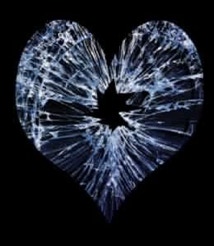Texas CPR Blog | Return to Blog Index
Jun 11, 2017
The Long Term Effects of SCA
Sudden Cardiac Arrest (SCA) survivors understand the preciousness of life – that one moment you can feel perfectly fine and the next wake up in the ICU a few days (or weeks!) later with no idea you have been through SCA, CPR, and defibrillation, listening to the stories your loved ones and hospital staff tell you about your ordeal. And that is only if you are mentally cognizant. Some survivors suffer severe neurological damage as the result of a lack of oxygen to their brain during sudden cardiac arrest and face a long road of therapy to regain a “normal” life. It’s a frightening prospect. So what is a “normal” life for the majority of SCA survivors?
Implantable Cardioverter Defibrillator (ICD)
Many people who have been through SCA receive an implantable cardioverter defibrillator (ICD). An ICD is a device placed just under the skin in the chest with leads connected to a patient’s heart. It performs the same function as an AED (automated external defibrillator). ICDs monitor the heart’s rhythm constantly, act as a pacemaker when the heart goes out of rhythm, and automatically apply a shock to the heart when it detects fibrillation. An ICD delivers immediate treatment without delay.
Post Traumatic Stress Disorder (PTSD)
PTSD is most often associated with soldiers returning from combat situations, but it can also be found in persons who have suffered profound dangerous experiences or trauma in other ways. Car accidents, domestic violence, and severe health issues such as sudden cardiac arrest are examples. In the case of PTSD associated with SCA, there is a debilitating fear of a recurrence which keeps patients from enjoying their everyday activities since they do not know when it might happen again.
General Anxiety and Depression
Not as severe as PTSD, sometimes the patient will feel general anxiety. Those patients with ICDs report anxiety around the possibility of feeling the shock from the device, which would indicate they once again could have been in a sudden cardiac arrest situation, not to mention the discomfort associated with the shock. Depression is also sometimes present, although it is usually reported in the first 6-12 months after resuscitation, and largely as a result of the loss of memory and the frustrations from coping with the physical and neurological stresses of recovery to varying degrees.
Long-Term Treatment
Once it has been determined what caused a patient’s sudden cardiac arrest, there are several options for procedures and drug treatment. Procedures may include:
- Coronary angioplasty
- Coronary bypass surgery
- Radio frequency catheter ablation
- Corrective heart surgery – if your sudden cardiac arrest was brought on by a structural heart defect, your cardiologist may recommend specific surgeries to address your particular concerns with an eye toward preventing further complications.
- Medications are almost always prescribed for long-term care.
- Doctors use various anti-arrhythmic drugs for emergency or long-term treatment of arrhythmias or potential arrhythmia complications. A class of medications called beta blockers is commonly used in people at risk for sudden cardiac arrest. Other possible drugs include angiotensin-converting enzyme (ACE) inhibitors, calcium channel blockers or a drug called amiodarone (Cordarone, Pacerone).
- Side effects will be discussed when you meet with your doctor to decide the best options based on the underlying condition which caused the sudden cardiac arrest to occur and to potentially prevent further incidences.
Life Expectancy
While exact statistics on life expectancy after SCA are difficult to find due to the sheer number of victims each year, it is estimated “More than 80 percent of SCA victims who are discharged home from the hospital live at least one year. More than half live another five years after resuscitation. Most people who survive SCA can return to their previous level of functioning.” (2)
Summary
Modern science and medical techniques have made it possible to survive cardiac arrest. As the public becomes more aware of the signs, symptoms, and treatments for SCA, early intervention with CPR and defibrillation should be able to save more lives and increase the likelihood of a viable life afterward. The sooner a victim of SCA receives CPR and defibrillation, the better their chances for neurological recovery. While the underlying problems which caused the SCA would still be present, at least patients would have a chance to address those problems and continue on here.
Footnote1:
Footnote2:
http://www.sca-aware.org/sudden-cardiac-arrest-faqs#faq23
TEXAS ONSITE CPR BLOG - Return to Blog Index

